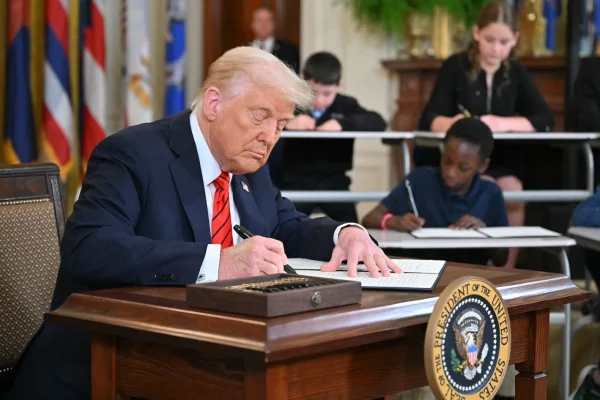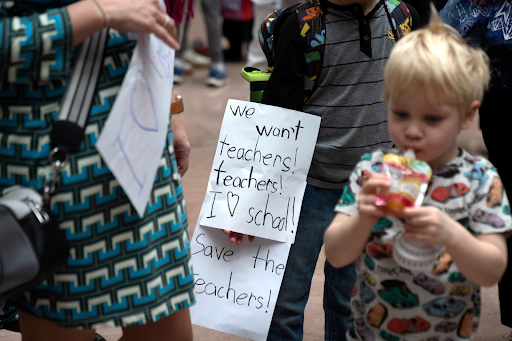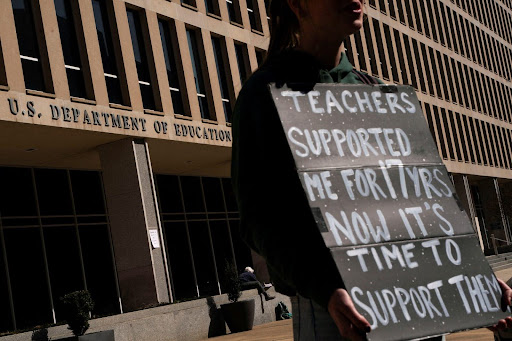On March 20, President Donald Trump signed yet another executive order directing the Secretary of Education to “take all necessary steps to facilitate the closure of the Department of Education and return authority over education to the States.” He claims that this sweeping move will improve declining American education outcomes and improve the adaptability of schools in their local areas. In between the lines of these seemingly positive effects, however, it is clear that Trump’s primary aim is to destroy federal diversity and equality initiatives laced throughout the current education system. But what exactly does the Department of Education do, and why do Trump and so many right-wing activists oppose this department’s existence so forcefully?
The Department of Education was first founded in 1979 as a response to pressure over discrimination against women, racial minorities, and underprivileged children in schools, and was aimed to bolster the educational rights of these groups and improve their long-term outcomes. In other words, from its inception, the Department of Education has been primarily a civil rights group. Throughout the duration of its 45 year existence, it has expanded massively, with the department now handling numerous financial aid programs, anti-discrimination initiatives and policies—as well as their enforcement—and the funding for approximately 15% of all public K-12 schools nationwide.
The Department’s most successful and fundamental efforts revolve around its support programs for minorities and disadvantaged learners as well as its massive, $1.693 trillion student loan program. Despite these many successes, the Department has had its fair share of issues as well.
In spite of its work over nearly a half-century, American education outcomes have continued to stumble. Recent surveys indicate that only 36% of fourth-graders and 26% of eighth-graders meet or exceed grade-level math standards, and only 33% of fourth-graders and 31% of eighth-graders meet or exceed reading standards. Additionally, teacher salaries have decreased 4.5% when adjusted for inflation while Department spending has simultaneously increased by 649% over the last 24 years. In other words, the Department seems to have fallen into the classic cycle of bureaucracy and has become increasingly inefficient with each passing year, precisely Trump’s argument for its dismantling. This argument, however, massively overlooks the effects that such an action would have and is a fairly weak cover for the true reason why conservatives seek to terminate it.

Although no action has yet been taken to fully shutter the Department since such a move would require an act of Congress, Trump’s administration and the Department of Government Efficiency have already begun to scourge the Department from the inside, making it a shell of its former self. Additionally, the Department, like all other government agencies, has attacked and removed anything related to DEI within the agency and is working to do so in public schools around the nation.
In his executive order, Trump states that “any program or activity receiving Federal assistance [is required to] terminate illegal discrimination obscured under the label ‘diversity, equity, and inclusion’.” The wording of this clause highlights exactly why it is so popular amongst conservatives: the goal is to end the national teaching of narratives that do not align with their traditional and often racist values. By terminating the Department and delegating its roles to the states, highly conservative districts will finally be able to change their curriculums to suit their ideological views without the fear of coming into conflict with national initiatives.
Even in these areas, however, the fallout that will come from the cuts will likely far exceed any “benefits” of making the education system “more efficient and inclusive.” Title I, for example, provides $18.8 billion in support for schools in districts composed of low-income families, money that would otherwise need to be provided by the states, a job that isn’t guaranteed to be picked up by all of them if the Department is fully shuttered.
Additionally, since many of the Department’s remaining roles deemed necessary by the Trump administration will be delegated to other departments (the student loan program, for example, is currently set to be delegated to the Small Business Administration), there could be major hiccups during the transition of critical programs that some of the most impoverished Americans firmly rely on, further stifling low-income families.

While the complete destruction of the Department of Education has not yet come to fruition, low-income communities are already bracing for what’s to come. In response, thousands of teachers across the nation have spoken out and many protests have occurred outside of the Department’s building in Washington D.C. While the exact implications of this developing story are unknown, it is clear that the Trump administration is once again trying to turn back the clock on one of the most fundamental aspects of a society, a move that must be met with strong protest now and will almost certainly be met with even firmer repercussions later.

